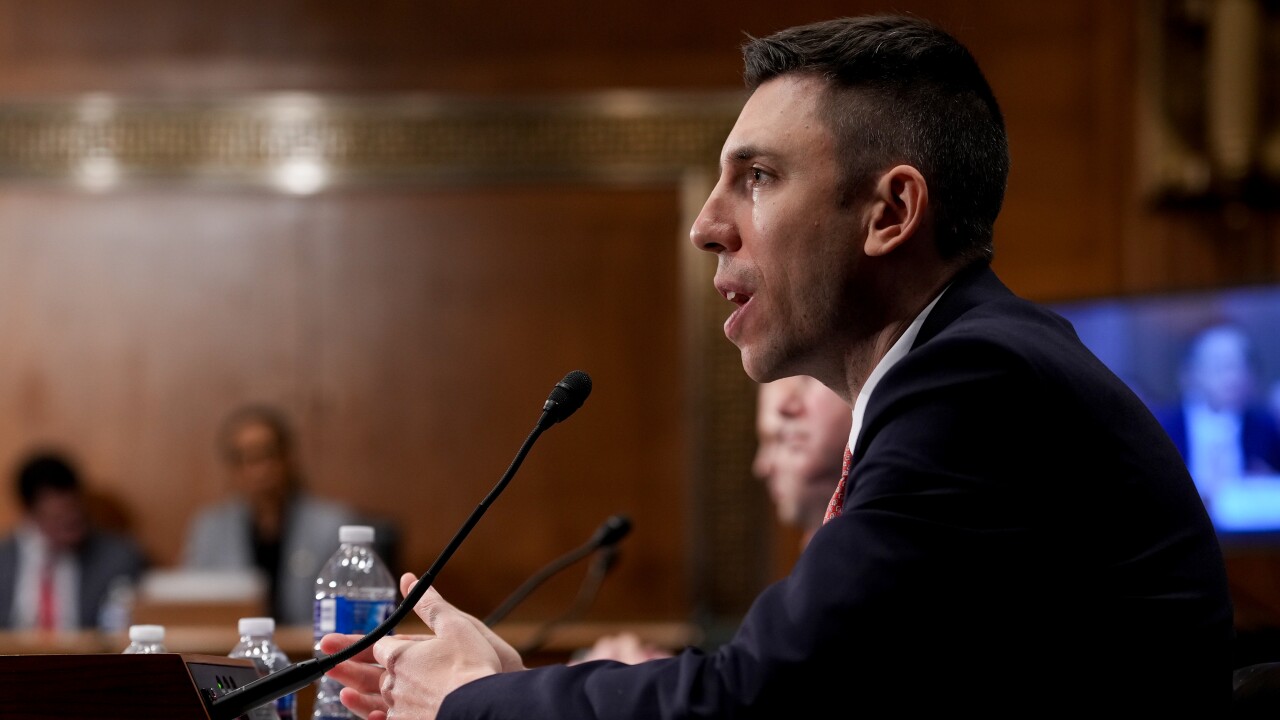It may seem as if the
Until recently, the U.S. financial services market was too divided on the issue of enabling faster payments, and too big for any one faction to push ahead. That changed with the
"The industry hadn't really thought about faster payments before, and a lot of talk began about new platforms or improving existing platforms," said Cecilia Frew, senior vice president and head of U.S. push payments, operating Visa Direct in the U.S. "We have had an original credit transaction in Visa Direct for about 15 years in other parts of the world, but it was so complicated to offer it in the U.S."
To make its own technology available in the U.S., Visa mandated its U.S. issuers in 2011 to start accepting original credit transactions, but did not tell them when they had to post the payment.
After that, the company "had the original credit transaction in place, and we just needed to bring it up to modern days in terms of faster speed," Frew said. "We've been slowly chipping away at this, and the industry is hearing about it now because it is real and it is something we can come to market with."
Visa Direct allows businesses or merchants to push a credit transaction back to a card account in near real-time, paving the way for credits on returned merchandise, insurance claims or payments to independent contractors to be completed in minutes rather than days. As such, it had the proper pieces in place to provide a clear resource for the right takers.
Various industry players such as
As these efforts move forward, Visa and Mastercard are in the best position to play a key role, said Gil Luria, analyst with Los Angeles-based Wedbush Securities.
"It's really unclear how things will shake out, but it is not much of a stretch that Visa and Mastercard's role is likely to remain central as these types of networks evolve," Luria said. "They both have such broad reach and good bank relationships."
Both companies have recently established stronger footing in Europe, with Visa completing its acquisition of
This expertise in Europe is likely to come into play with faster payments in the U.S. either as examples to follow or in providing solid resources to the U.S. initiatives.
"The payments markets evolve at different rates," Luria added. "The U.K. has had faster payments for five years now, but the U.S. is not there yet. But the card brands have a particular skill in bringing different constituencies together to agree on how all of this will work."
With Visa Direct getting new life in the U.S., the card brand also sees it as a way to address two key concerns it had moving forward.
"The notion of the millennial consumers and their influence on the market was also a factor," Frew said. "They were wanting everything faster and easier."
In addition, payments disruptors like PayPal and Venmo, Square Cash and Facebook Messenger were addressing part of this need for digital natives.
"It was then that we said this is actually getting serious, so let's do it with Visa Direct," Frew said. Visa then placed a timing mandate in October of 2015 on top of the credit transaction acceptance mandate, saying those transactions had to be available to the customer in 30 minutes, even though the technology enabled those transactions to happen even faster.
Visa has since worked with its issuers to assure they are meeting those mandates. "We are at 80% of issuers now meeting the mandates, and that will be higher soon. So now it works fast, whereas it didn't before," she added.
The card brand estimates the market for real-time credits to be as high as $9 trillion, with another $1 trillion in the adjoining person-to-person market. "When considering all of the use cases for Visa Direct, and the market at $10 trillion, that is a pretty big market," Frew said.





